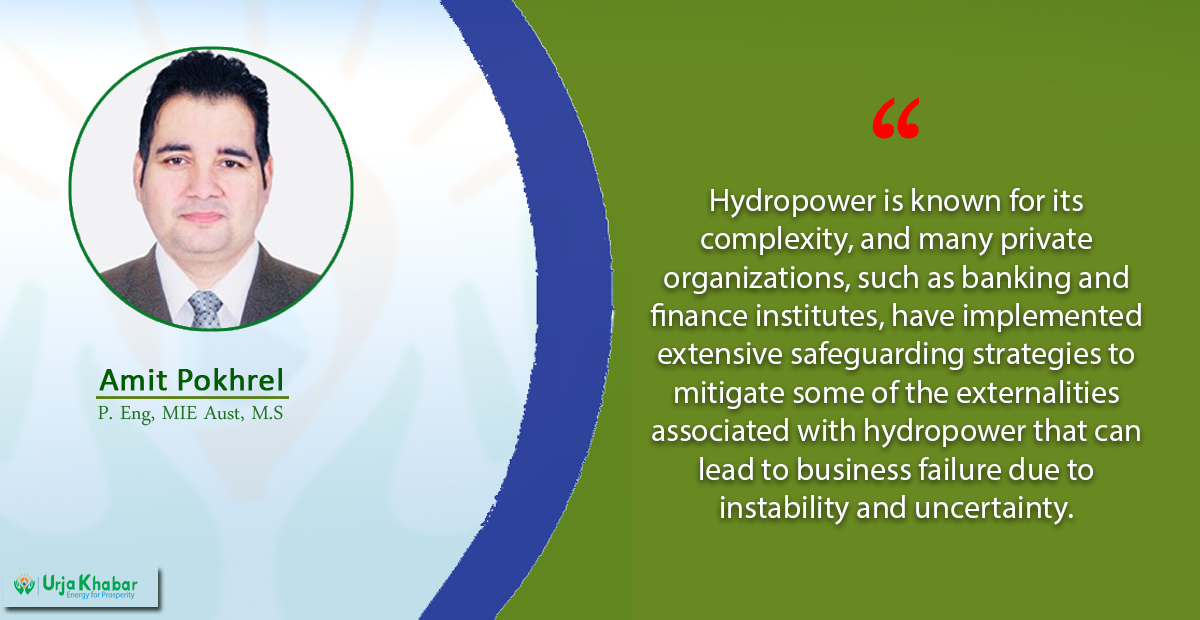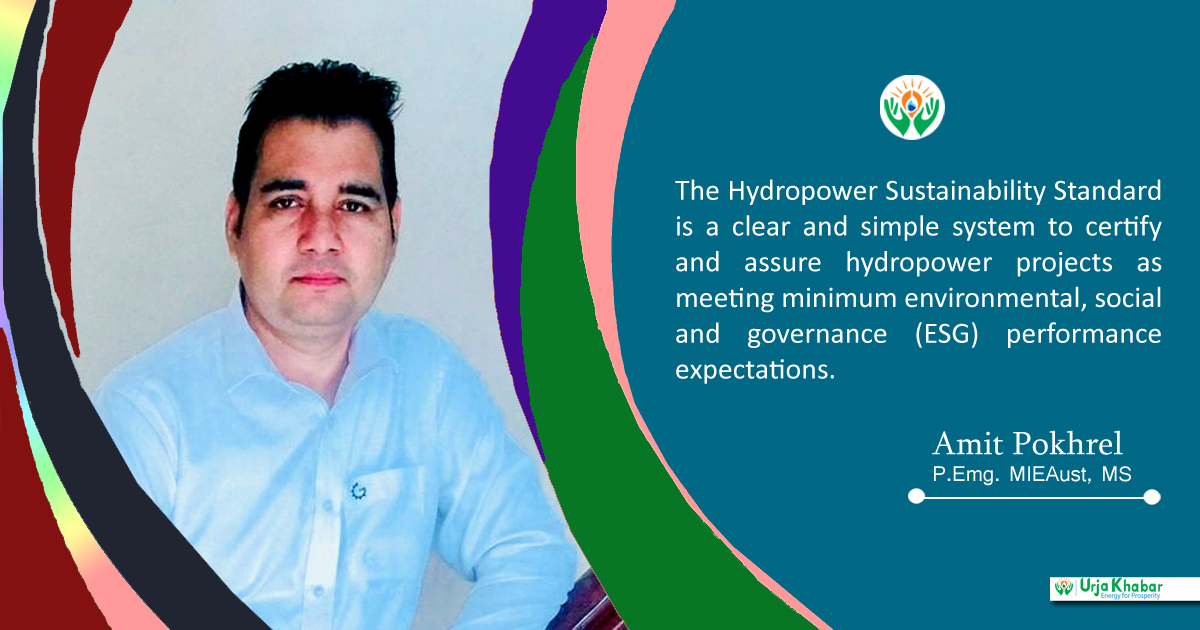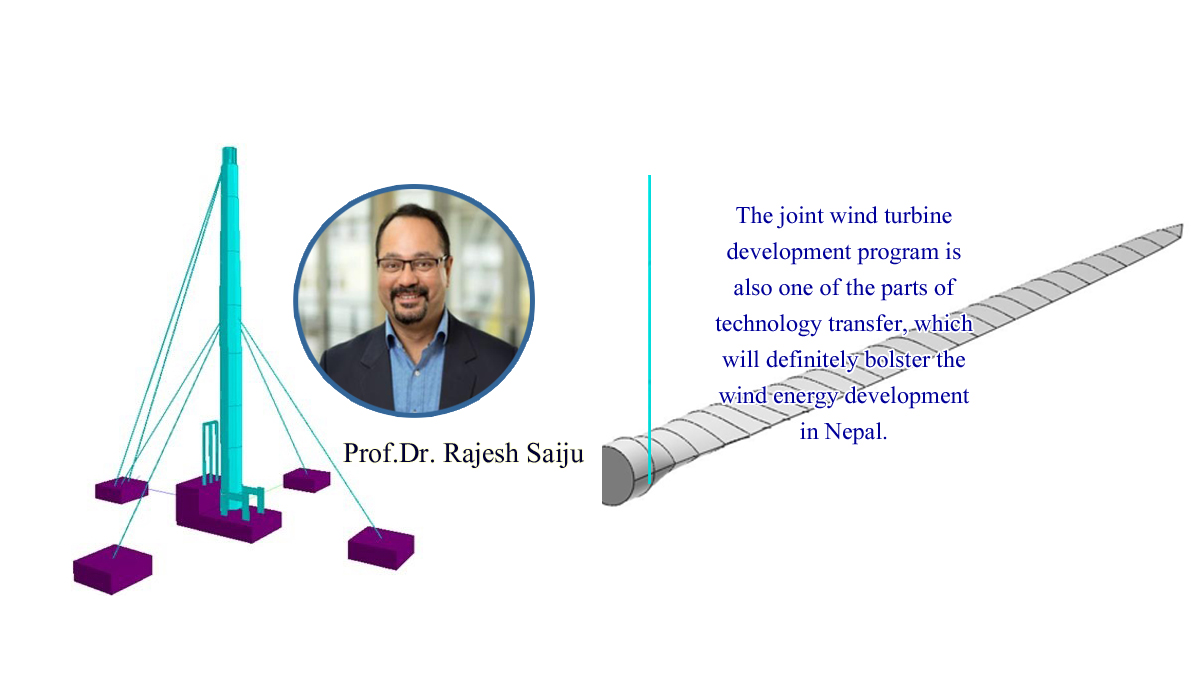Energy Update
Fostering Inclusive Model in Promoting Sustainable Practices in Hydropower Development

Nepal, with its hydroelectric potential of more than 83,000 MW, and is well-positioned to progress towards a more sustainable and inclusive development model, while also aiding its neighbors in achieving their climate objectives through the export of excess power.
In 2018, the IFC joined forces with the Ministry of Forestry and Environment to create an EIA Manual for Hydropower to align Nepal with global policies and practices, as well as innovative approaches to the country's climate objectives. IFC's commitment to promoting sustainable practices and a more inclusive industry will continue to drive the growth and development of the hydropower sector, while also contributing to the advancement of environmental and social standards.

The concept of promoting inclusive development and inclusion has remained largely theoretical, as public sector involvement in hydropower has not been pursued seriously in the past. Hydropower is known for its complexity, and many private organizations, such as banking and finance institutes, have implemented extensive safeguarding strategies to mitigate some of the externalities associated with hydropower that can lead to business failure due to instability and uncertainty.
In 2018, the International Finance Corporation (IFC) contributed to the implementation of the ESRM Guideline under the aegis of the Nepal Central Bank. This Guideline, which was updated in 2022 to cover climate risks as well as sector-specific guidelines for hydroelectricity, is now a mandatory requirement for all credit disbursements by commercial, development, and micro-financial institutions. The National Banking Institute (NBI) and IFC have worked together to implement the Guideline through two Trainers Programmes. This has enabled banks to ensure compliance with environmental and social risk management standards related to hydroelectricity projects. Furthermore, IFC conducted a Basin-wide Cumulative Impact Assessment and Management Plan of the Trishuli River Basin to assess the overall environmental and social risk of multiple hydroelectricity projects, including the flagship project of IFC, Upper Trisul-1. This project has contributed to the development of a robust and sustainable hydroelectricity industry in Nepal, which has in turn attracted more investments in the sector and has set the highest Environmental & Social benchmarks.

The IHA has also implemented its sustainability protocol and guidelines, which until now have been largely optional in terms of support to organizations. Each hydropower plant has its unique scope and effects; however, the process provides some credible and uniform guidance on how to achieve sustainability for private-sector investments while contributing to long-term objectives. However, it will be essential to review progress openly and inclusively to ensure that the finance is not causing any maladaptation in the field or affecting long-term social and ecological sustainability. Projects that adhere to the Criteria increase their credibility and access to responsible investment opportunities.
To ensure sustainable development without jeopardizing economic growth and access to electricity, the agencies have established Hydropower Certification Criteria. This Criterion applies to all kinds of projects that are seeking responsible financing. It also provides an explanation of why certain thresholds were selected and the reasons for the criteria. In recent years, companies have been highlighted in the sustainability debate due to their responsibility for a range of negative impacts on the environment and society. The compensation received by hydropower companies often does not match the needs of the community or the energy industry, and it is difficult to reconcile the importance of hydropower for the environment with the sustainability of power companies in the long run.
Organizations must carry out a thorough evaluation of their management practices to ensure corporate sustainability and its measurement are effective. This is due to the need to ensure that financial performance is in line with environmental quality and the well-being of society. This relationship between business, society, and the environment is created by the re-introduction of concepts based on the concept of good living, which requires a critical assessment of development and a comprehensive response to social and economic requirements by nature. Good living goes beyond the concept of well-being which is based on material assets and income.
Sustainability and the well-being of communities go hand in hand, and benefit sharing is a way to make sure both are taken care of. It's a set of policies and practices that help companies stay competitive while also improving the economy and social life of the communities they serve. Benefit sharing is about how society and business interact, and it looks at both companies' productivity and society's needs from a wider perspective. The hydropower industry has seen a surge in demand due to the effects of global population, climate change, and economic growth. This has led to the development of new, unconventional forms of renewable energy (such as solar) and the consolidation of the use of renewable alternatives to traditional energy sources (hydropower). Hydropower has become the most popular form of renewable energy globally and is continuing to expand. However, the development and operation of hydroelectric power plants have a significant economic, environmental, and social impact on local communities.
In reality, social, psychological, and economic shifts and pressures are impacting communities, impeding their quality of life and the potential for quality of life, as a result of the territorial reconfiguration necessitated by hydroelectric companies. According to Moran et al., sustainable solutions should be created to maximize the benefits of energy sources and the communities’ surrounding dams. The Industrial Revolution stimulated economic growth and encouraged sustainable practices, however, it also led to significant environmental and social issues. Nevertheless, the sustainable mechanism offered scalable services to support the rapid economic development necessitated by the renewable energy market and the use of solar energy sources.
More inclusive patterns of innovation offer the prospect of facilitating the move to more sustainable and equitable growth pathways. Inclusive innovation has three major characteristics. It can: involve the production of products appropriate to the needs and incomes of the marginalized; provide for a greater degree of involvement of marginalized people and communities in processes of production; and involve the participation of the marginalized in the process of innovation itself. Innovations can be new to the enterprise, the country, the sector, or the world. From the perspective of the rate and trajectory of growth and development, the degree of absolute novelty is not the most important concern – the contribution of technological progress is that it provides an advance on what has occurred in the past and that this advance is realistically within the competence-horizon of the innovating stakeholder.
To meet global net zero objectives, a sustainable approach can be used to promote inclusive development modality, which may involve benefit sharing and the development of infrastructure projects of varying sizes. Establishing the inclusive modality benchmark can help to ensure that hydropower projects offer net benefits to local communities and the environment they interact with. By promoting sustainable development aid, economic growth is ensured to be inclusive and beneficial to all segments of society. By taking into account social and environmental factors, it can help to reduce disparities, enhance living standards, and foster social well-being in addition to economic growth.
The Author of this article works as a Senior Contract & Commercial Expert in the Energy Business of Golyan Group
Reference
1. Fostering inclusive, sustainable economic growth and "green" skills development in learning cities through partnerships on JSTOR
2. Nic-inc-innovation-paper.indd (ox.ac.uk)
3. Leaving No One Behind: The Path to Disability Inclusive Development - myRepublica - The New York Times Partner, Latest news of Nepal in English, Latest News Articles (nagariknetwork.com)
4. (PDF) Fostering inclusive, sustainable economic growth and “green” skills development in learning cities through partnerships (researchgate.net)
Conversation
- Info. Dept. Reg. No. : 254/073/74
- Telephone : +977-1-5321303
- Email : [email protected]














